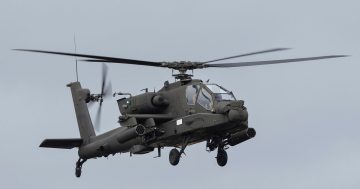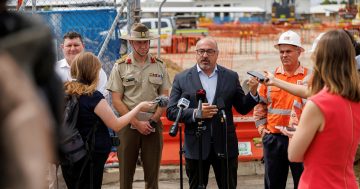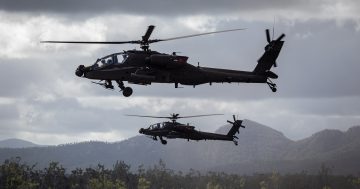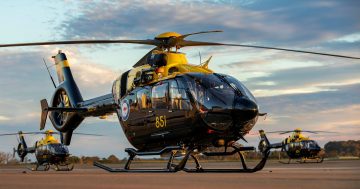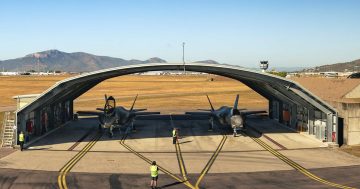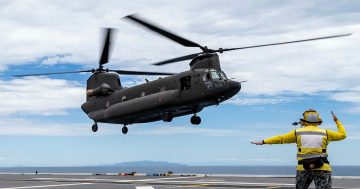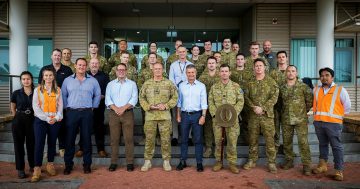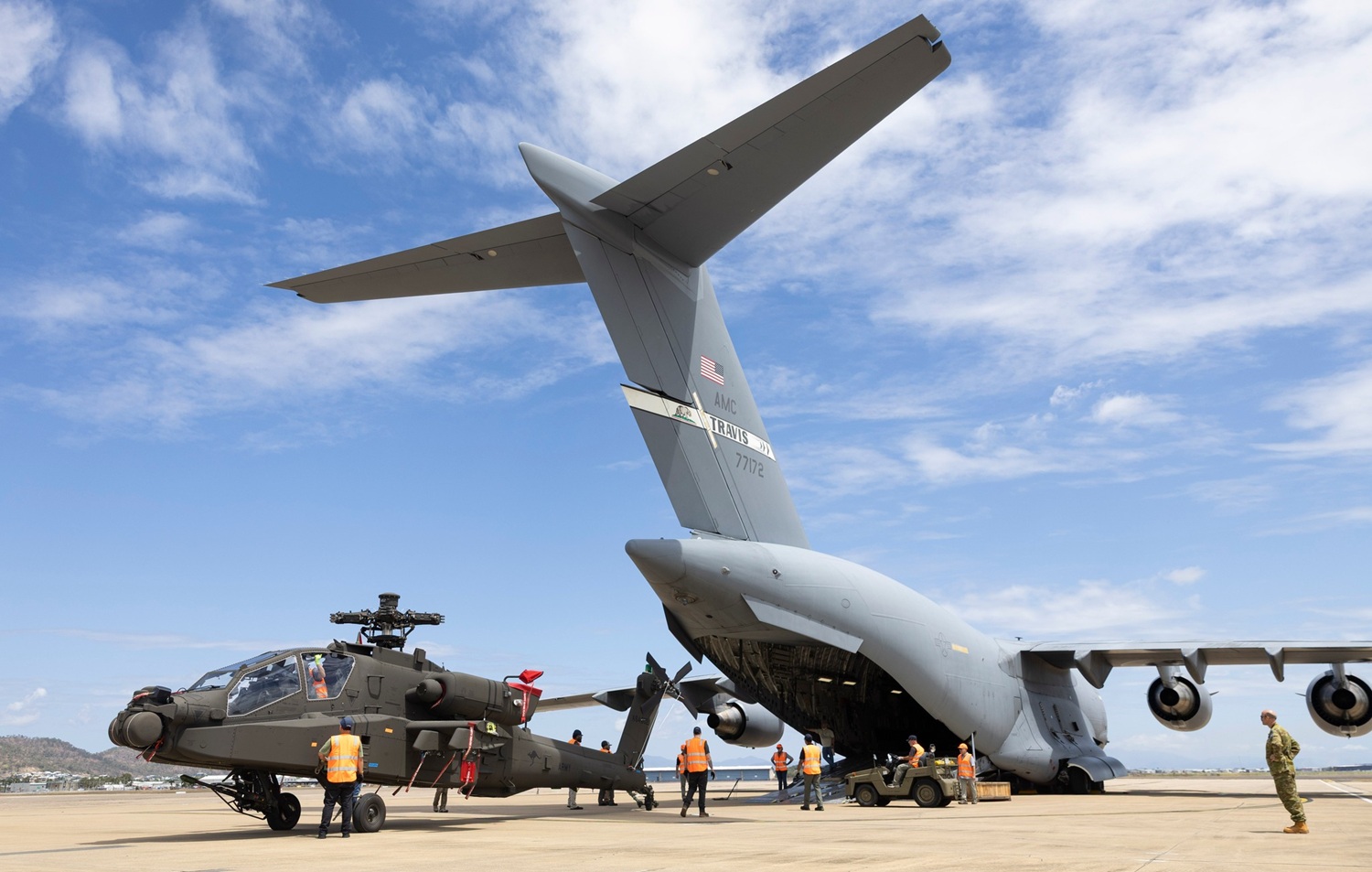
Australia’s first AH-64E Apache Guardian is unloaded from a US Air Force C-17A transport at Townsville on 28 September. Photo: ADF.
The first two Boeing AH-64E Apache Guardian attack helicopters for the Australian Army were delivered to RAAF Base Townsville in North Queensland aboard a US Air Force C-17A transport on 28 September.
Procured under the Project LAND 4503 Armed Reconnaissance Helicopter (ARH) replacement program, the new aircraft are the first of 29 helicopters that will replace the army’s current Tiger ARH helicopters in service with the 1st Aviation Regiment (1Avn), and the latest addition to the rapidly changing army aviation landscape.
As part of the new aircraft’s entry into service, 1Avn is moving from Robertson Barracks near Darwin to Townsville, with the base receiving a $700 million makeover to accommodate the new machines.
The base upgrades include accommodation for the 16th Aviation Brigade headquarters, which has relocated from Brisbane; new aircraft hangars and renovations to existing hangars; new working accommodation; new training and command facilities; a simulation hall to accommodate Apache pilot simulation training and the Army Aviation Training Centre Attack Helicopter Wing; and a multistorey carpark for base personnel.
The $4 billion acquisition of the Apache has been controversial, with experts saying helicopters are rapidly becoming obsolete in the face of the proliferation of cheaper, uncrewed systems.
The Apache is a much larger and more powerful aircraft than the Tiger it is replacing, with the army saying it is a key element of the service’s “transformation into a force optimised for littoral manoeuvre and long-range strike”.
“Acquired through foreign military sales with the US, the Apache provides critical aviation effects including reconnaissance, communications and networking, firepower and offensive support,” it says.
The aircraft can carry advanced weapons such as the Hellfire and APKWS air-to-surface armaments, and can act as a manned-unmanned teaming (MUM-T) networked airborne control element for multiple uncrewed aerial systems.
Defence Minister Richard Marles said the Apache was the most advanced attack helicopter in operation today, and the Federal Government was pleased to welcome the first two helicopters to Townsville.
“The AH-64E Apache provides a critical-step change in attack aviation capability for the Australian Army and builds on the government’s investments to improve the ADF’s ability to operate from Australia’s northern bases,” he said.
“Our investment in North Queensland to support the Apache fleet will not only provide significant training and employment opportunities through a ‘train local to stay local’ approach, but will make Townsville Australia’s largest defence helicopter industry hub – supporting local jobs.”
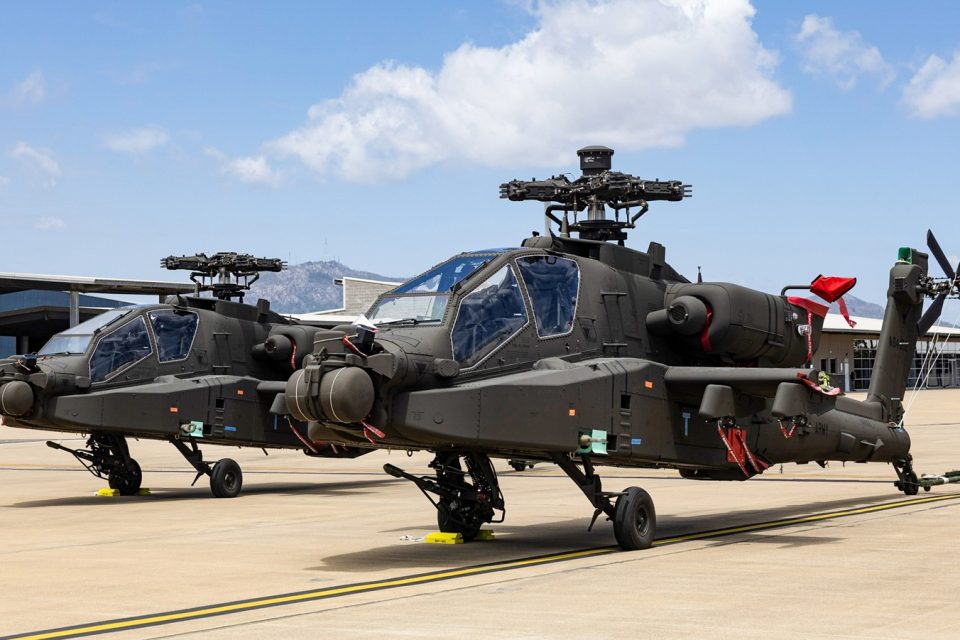
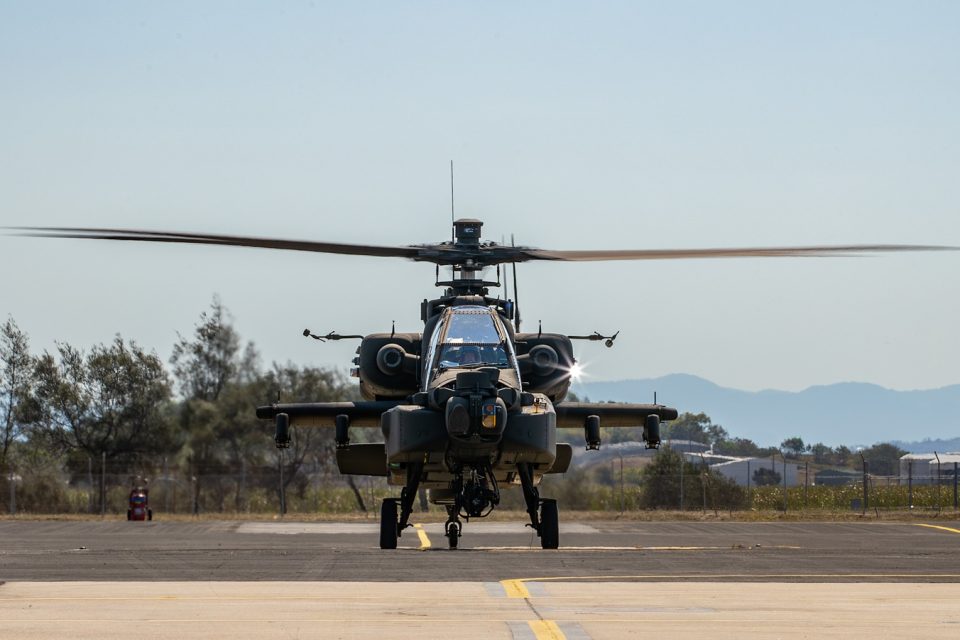
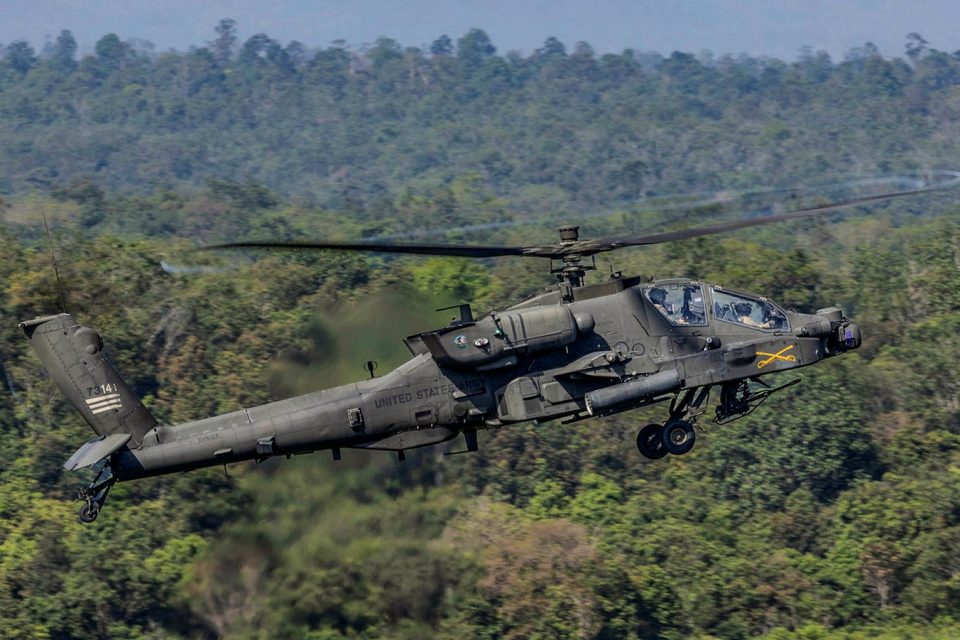
Boeing Defence Australia was awarded an initial seven-year, $306 million contract in February 2024 to sustain the new helicopters in service at Townsville alongside the army’s larger twin-rotor CH-47F Chinook fleet.
“The aircraft arrival is a major boost to Australia’s military capability and delivers new, skilled jobs at the cutting edge of aerospace,” Boeing Defence Australia managing director Amy List said.
“Under our seven-year Apache Initial Support Contract, we’re creating 230 jobs in Queensland, with the first 36 aircraft maintenance engineer trainees and apprentices starting training in January 2026, joining our existing 80-strong CH‑47F team.”
Vice-president of Boeing Attack Helicopter Programs Christina Upah said the delivery of the first two Australian Apaches underscored the strength of Boeing’s enduring partnership with Australia.
“Working side-by-side with the Australian Army, Capability Acquisition & Sustainment Group (CASG) and local industry, we are delivering the world’s most advanced attack helicopter capability purpose-built to ensure battlefield dominance, bolster interoperability with allied nations, and evolve with the latest technologies for decades to come,” she said.
There are currently 1300 Apache helicopters in service with 18 nations, with all 29 of Australia’s aircraft scheduled to be delivered by 2029.


